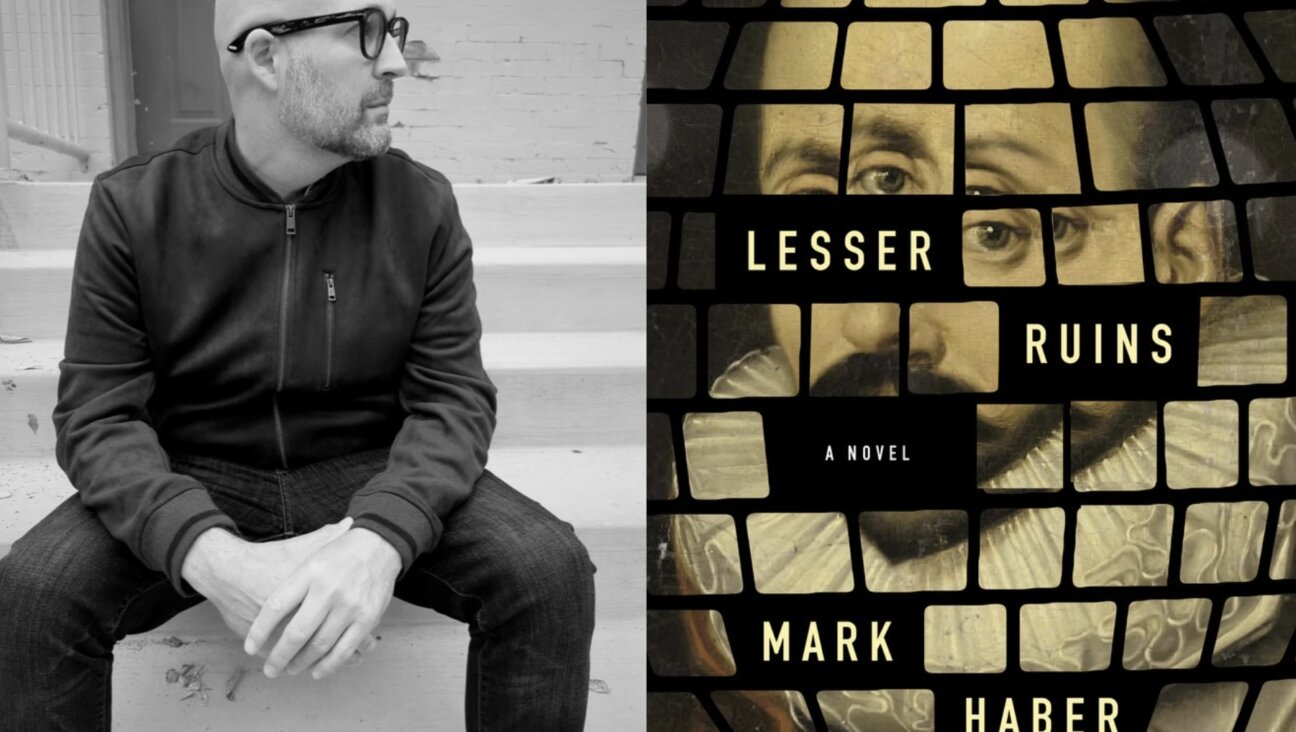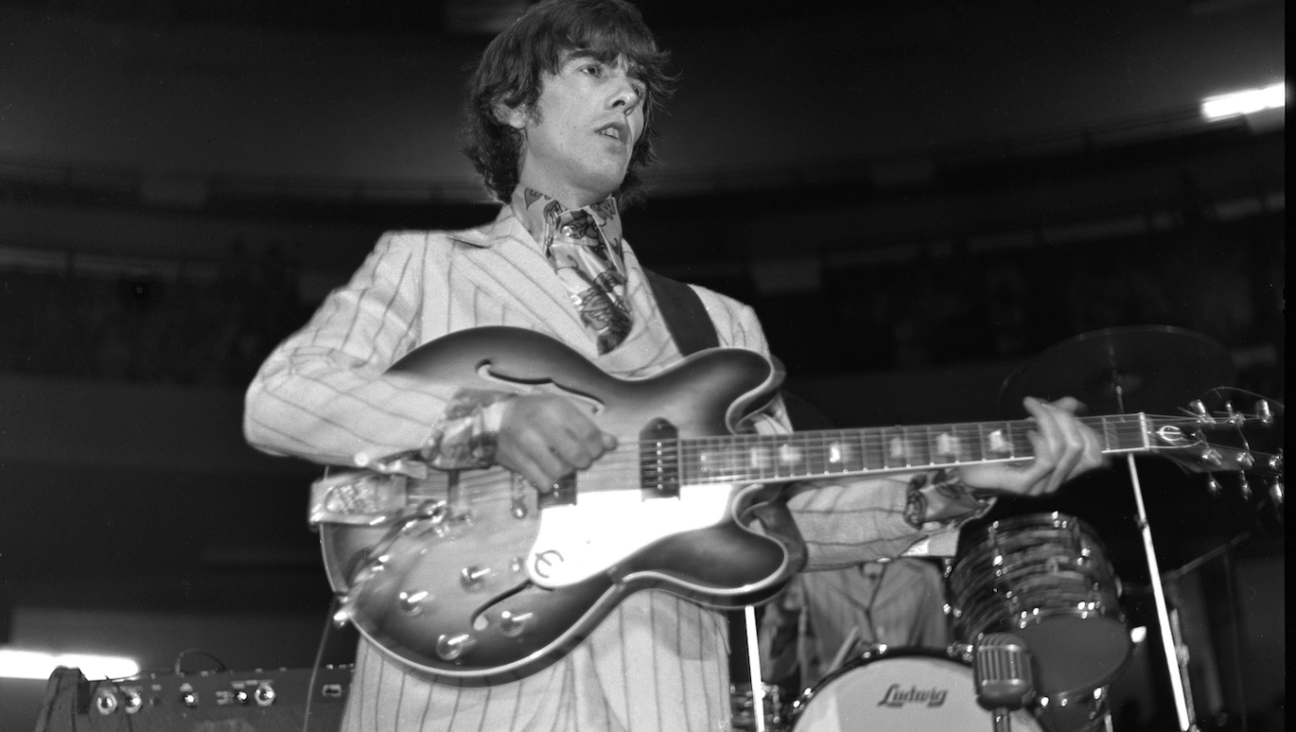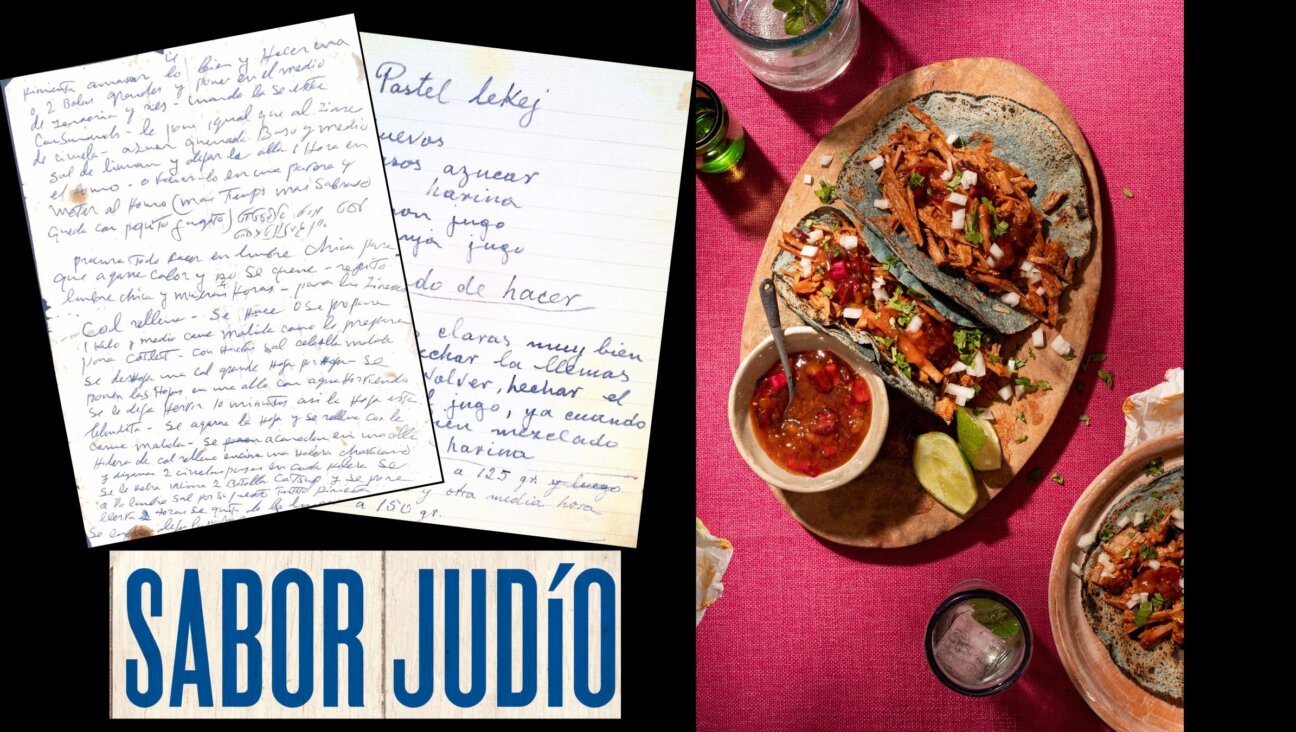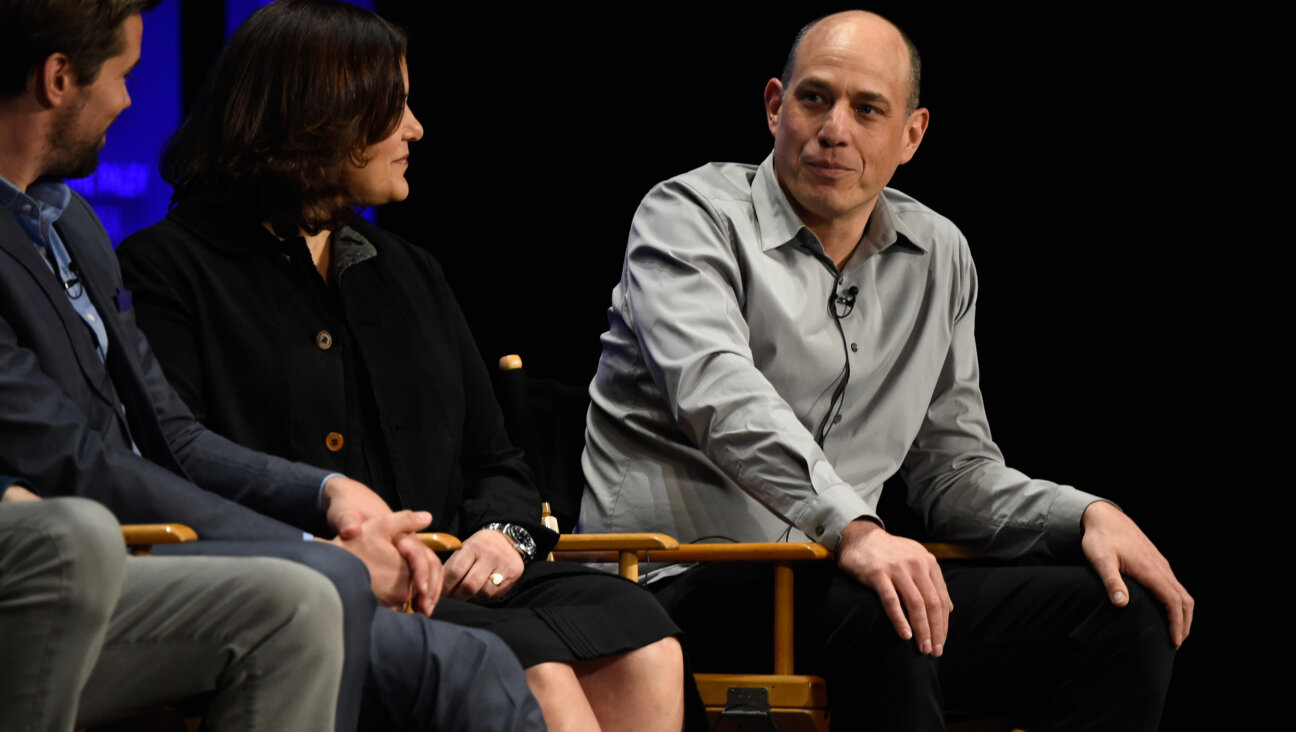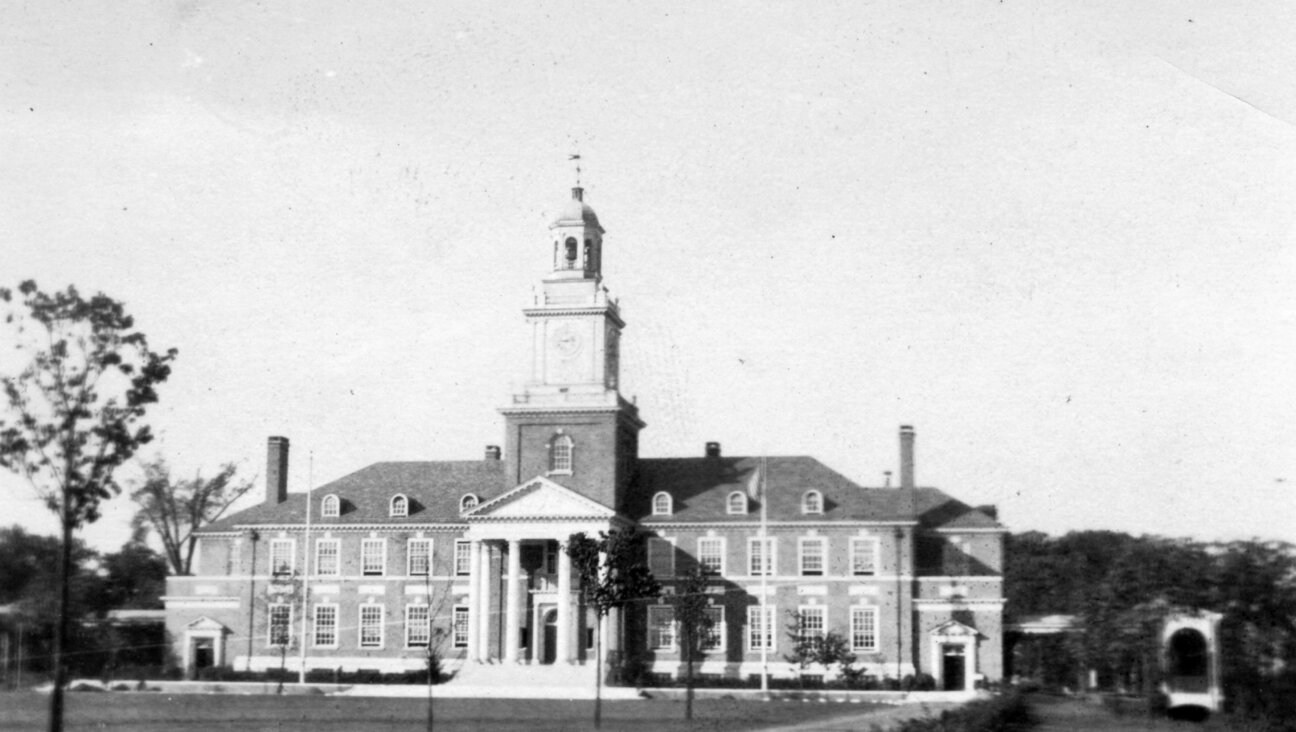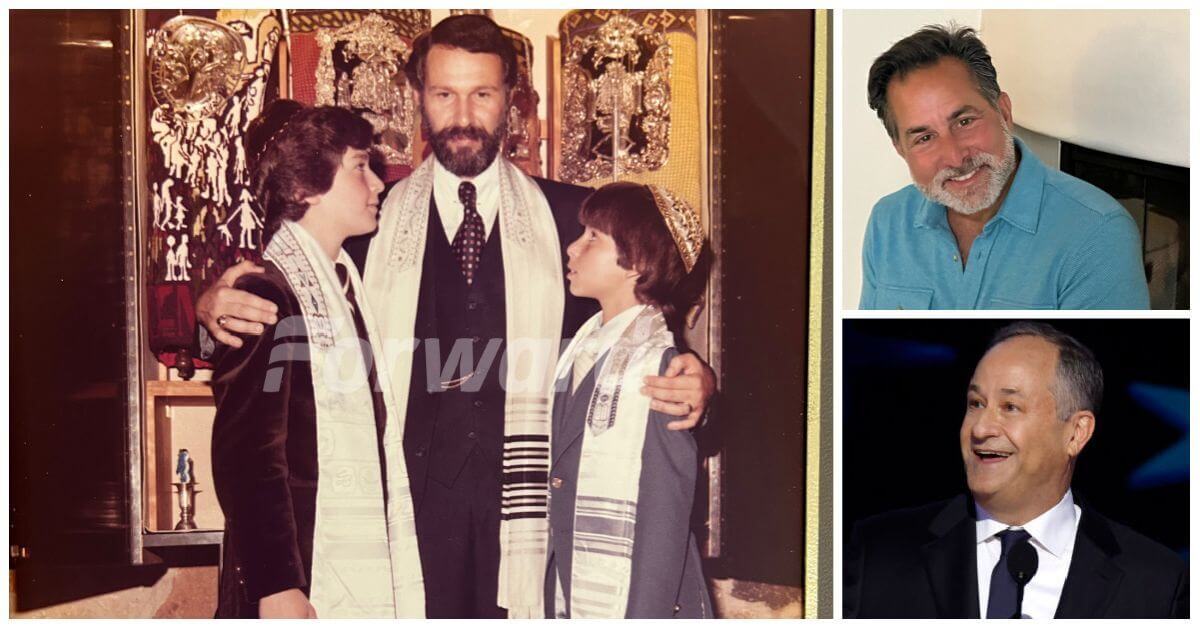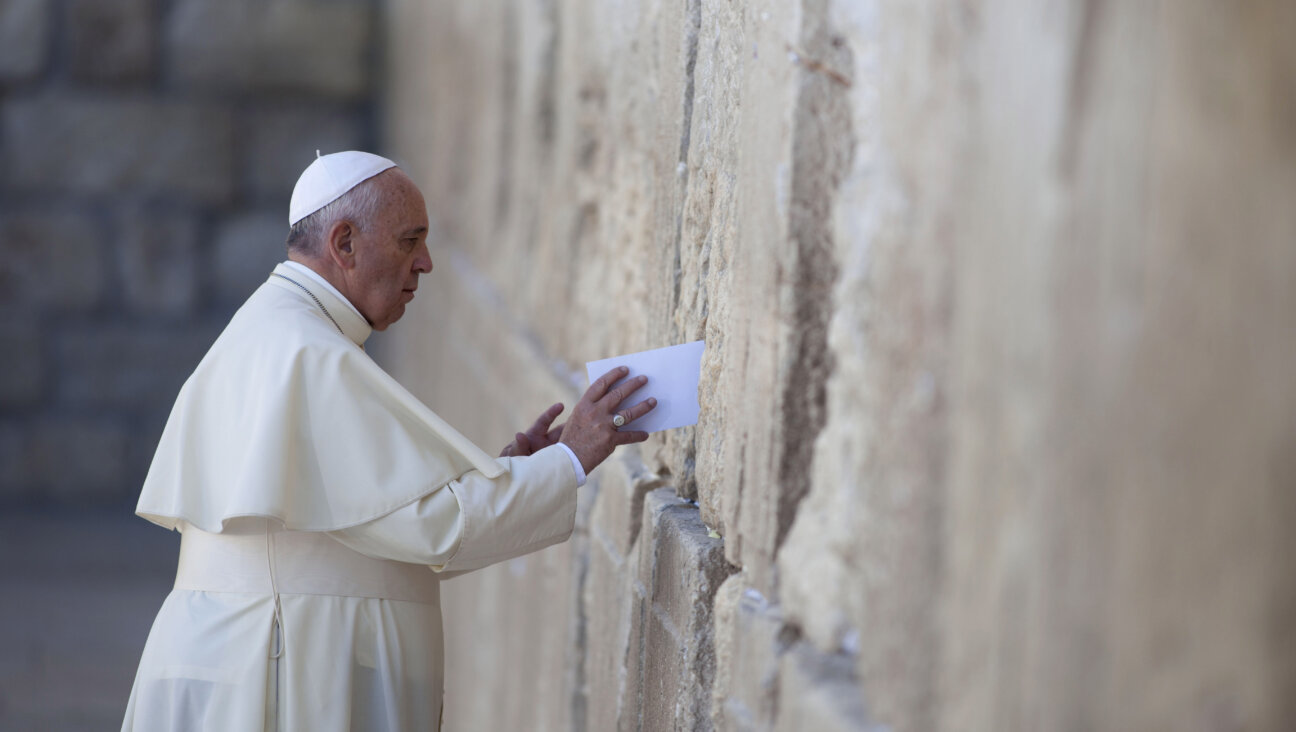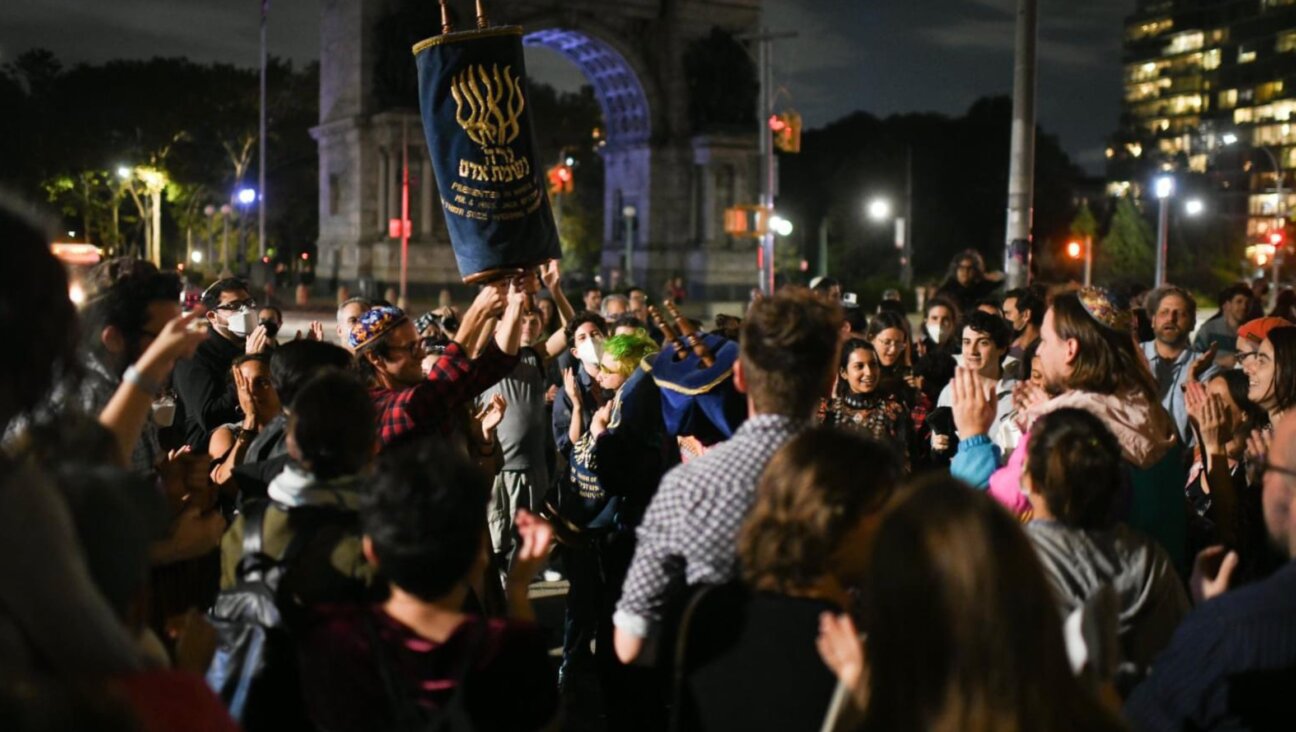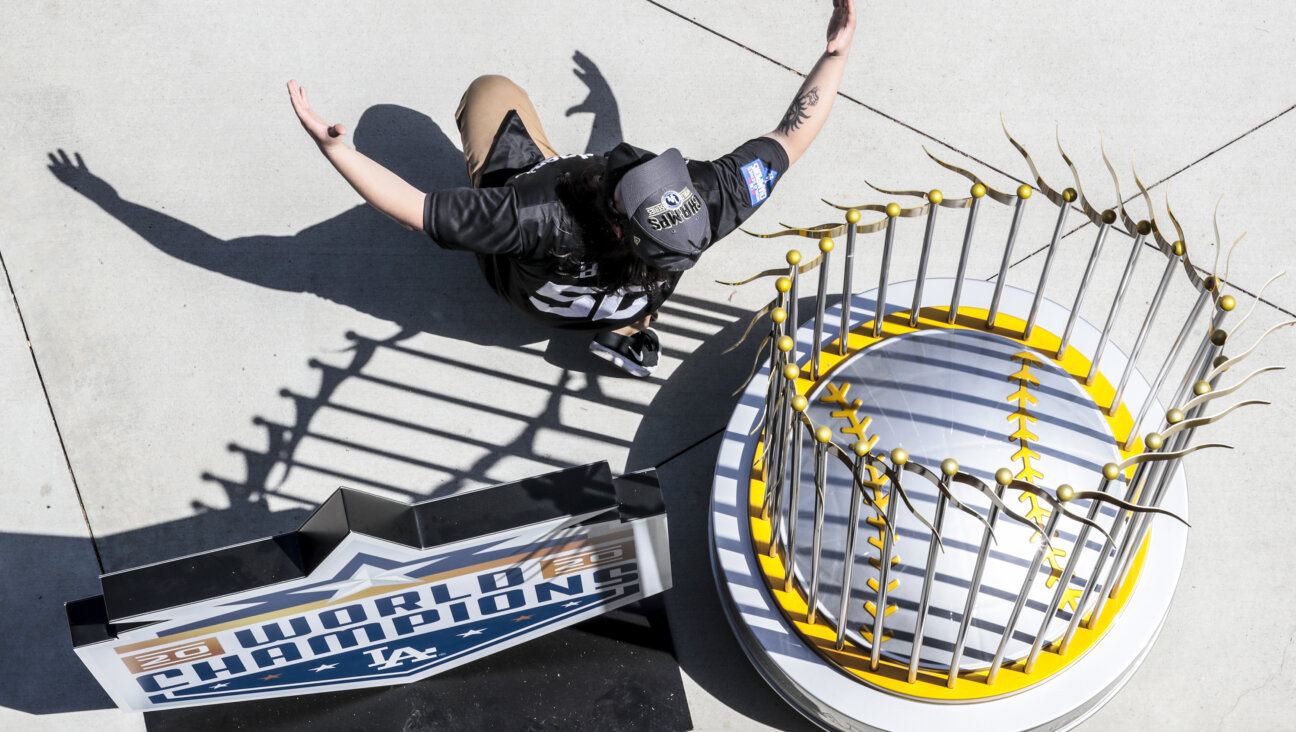What Do A Jewish Broadway King And Pablo Escobar Have In Common? This Dalí Painting

Salvador Dalí in the 1930s. Image by Getty Images/AFP/Stringer
A Jewish theater impresario, an infamous Colombian drug lord and a Japanese businessman are connected by a curious dance of life and death – more specifically “The Dance” a 1957 painting by Spanish surrealist Salvador Dalí.
The New York Times reports that the chain of ownership of the artwork, which depicts two twisted, faceless figures locked in struggle before a barren vista, has been given greater context in a new book “Pablo Escobar: My Life and My Prison” by Victoria Eugenia Henao, Colombian drug czar Pablo Escobar’s widow.
At Henao and Escobar’s apartment in Medellín, the painting survived a 1988 targeted car bombing. It wasn’t the first time the piece rose from the ashes and it wouldn’t be the last.
The painting, originally titled “Art of Boogie-Woogie” was first brought to life in 1944 in a small room in the soon-to-be opened Ziegfield Theater. Billy Rose, a prolific producer, showman and lyricist had commissioned Dalí to paint a series depicting the Spaniard’s impressions of various performing arts. Rose, whose Zionist involvement and heroics have been noted in the Forward, owned the Ziegfield and had “Art of Boogie-Woogie” and other works from the series hung in the lobby for the premiere of the theater’s first production, a musical revue called “Seven Lively Arts.”
At some later date Rose moved the painting, which showed a danse macabre between several distorted figures around a flaming tuba, to his home in Mount Kisco in New York’s Westchester County. In 1956, a fire ravaged Rose’s home, taking the painting with it.
Dalí repainted “Art of Boogie-Woogie” as “The Dance” in Spain for the same price as the original New York-composed commission. From here the chain of ownership gets fuzzy. Rose, who died in 1966, sold the painting and, whoever purchased it auctioned it off at Sotheby’s in New York in 1985.
Henao doesn’t specify in her book if she was the one who bought the artwork at Sotheby’s for $209,000, but by 1988 it had found its way to her apartment in Medellín.
“It seemed incredible to me,” Henao wrote in her book, translated in The Times, “that at my 22 years of age I could have such a work of art in my house.”
According to Henao, who narrowly escaped the 1988 car bomb attack that destroyed the apartment but not “The Dance,” the painting became a talisman for those close to Escobar. After the attack it was kept in the family, relocated to Henao’s sister’s home in another Medellín neighborhood. It was there that the restored painting nearly met the fate of its predecessor.
In 1993 Los Pepes, a vigilante group that had targeted Escobar, set Henao’s sister’s home on fire. But the arsonists must have been aware of the painting’s value. They stole “The Dance” (also known as “Rock ’n’ Roll”) and following Escobar’s death in December of that same year, offered to return it to Henao to help offset the debts owed to her late husband’s enemies. She wrote that she refused the offering, fearing Los Pepes would continue to view her as an a threat for accepting it. Henao must have placated Escobar’s rivals, as she was eventually able to escape with her family to Argentina.
By 1994 “The Dance” was up for auction at Sotheby’s in London. In the catalog, The Times reports the named previous owners included Billy Rose and another collector. The seller was not listed, and neither was Escobar. 40 years and one recreation later, the painting was sold for an undisclosed amount to Teizo Morohashi, founder of the XEBIO Corporation, a sporting goods retailer.
The painting, passed down through these unlikely fellow collectors, has been on display at the Morohashi Museum of Modern Art in the Fukushima region of Japan since 1999. Its new home, the recent site of a 2011 nuclear disaster, fits the painting’s internationally tenacious tale of survival.
PJ Grisar is the Forward’s culture intern. He can be reached at [email protected].
A message from our CEO & publisher Rachel Fishman Feddersen

I hope you appreciated this article. Before you move on, I wanted to ask you to support the Forward’s award-winning journalism during our High Holiday Monthly Donor Drive.
If you’ve turned to the Forward in the past 12 months to better understand the world around you, we hope you will support us with a gift now. Your support has a direct impact, giving us the resources we need to report from Israel and around the U.S., across college campuses, and wherever there is news of importance to American Jews.
Make a monthly or one-time gift and support Jewish journalism throughout 5785. The first six months of your monthly gift will be matched for twice the investment in independent Jewish journalism.
— Rachel Fishman Feddersen, Publisher and CEO








